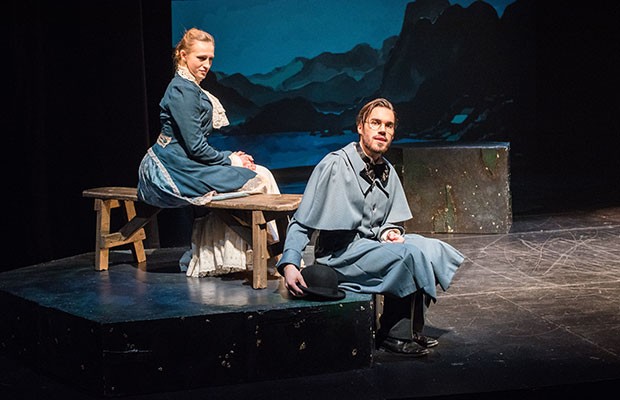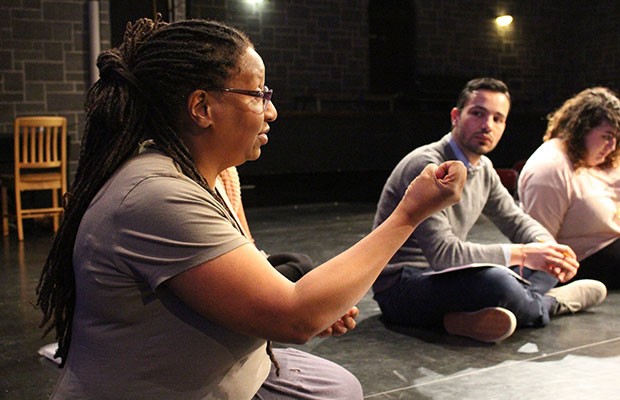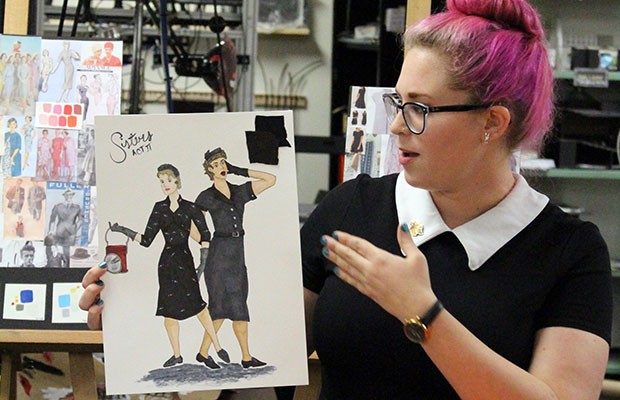Over the last year, the Department of Theatre has completely reimagined its role as a teacher of the dramatic arts.
Using a “learning-first” approach, faculty have rewritten the structure of their degree programs and re-envisioned the production of their big public performances.
And as end-of-term productions come to the stage, reviews from faculty, staff and students have been good.
‘Our students have to be involved’
The Department made a definitive move away from a regional theatre model, says Assistant Professor Noah Drew. In that model, which the department had adapted for many years, artistic directors chose all the shows for a season. For each script they picked a director, who then picked student designers, actors and so forth.
From a pedagogical point of view, that’s limiting, Drew explains. According to that model, students took an elective course to be in the production – if they were selected. If there were nine roles in the script, nine roles were cast.
“That’s not really how classes should work. If a student is in the right program who has the right prerequisites, they get to take the class.”
“In a learning-first model, productions are central to our curriculum. Previously, a huge amount of resources were deployed for courses that weren’t required and that didn’t serve most students. Now, our Public Performance Projects serve all our students. They have to take public performance project classes during their time with us.”
'Offering truly new takes on canonical works'
The change required them to reinvent annual productions. A public performance task force picked plays where they had the rights to make radical adaptations, so there would be enough roles for students and so they would have more freedom to make classic scripts relevant in a new way.
"It’s a way of offering truly new takes on canonical works, that we believe will help keep theatre meaningful in a contemporary milieu."
For example, Drew explains, Secrets and Lies is a mash-up of scenes from five plays by the Scandinavian playwright Henrik Ibsen. Every actor has one or two strong scenes where they be will challenged.
"There are no leads. Every student who is involved as a performer has a roughly equivalent role. You wouldn’t have a regular class where one person wrote five papers and three exams and everyone else just wrote a single 500 word paper.”

 Alexandra Przybyla and Simon Pelletier onstage in Secrets and Lies: The world of Henrik Ibsen. Photo credit: Daniel Haber
Alexandra Przybyla and Simon Pelletier onstage in Secrets and Lies: The world of Henrik Ibsen. Photo credit: Daniel Haber
 'It's more about the creative process than the perfect production," says Artist-in-Residence Diane Roberts. Photo by Callum Pfohl.
'It's more about the creative process than the perfect production," says Artist-in-Residence Diane Roberts. Photo by Callum Pfohl.
 "It’s a huge challenge and it takes a lot of time, but the creative implications are awesome." Sarah Mauracher, Design for the Theatre Student. Photo by Callum Pfohl.
"It’s a huge challenge and it takes a lot of time, but the creative implications are awesome." Sarah Mauracher, Design for the Theatre Student. Photo by Callum Pfohl.